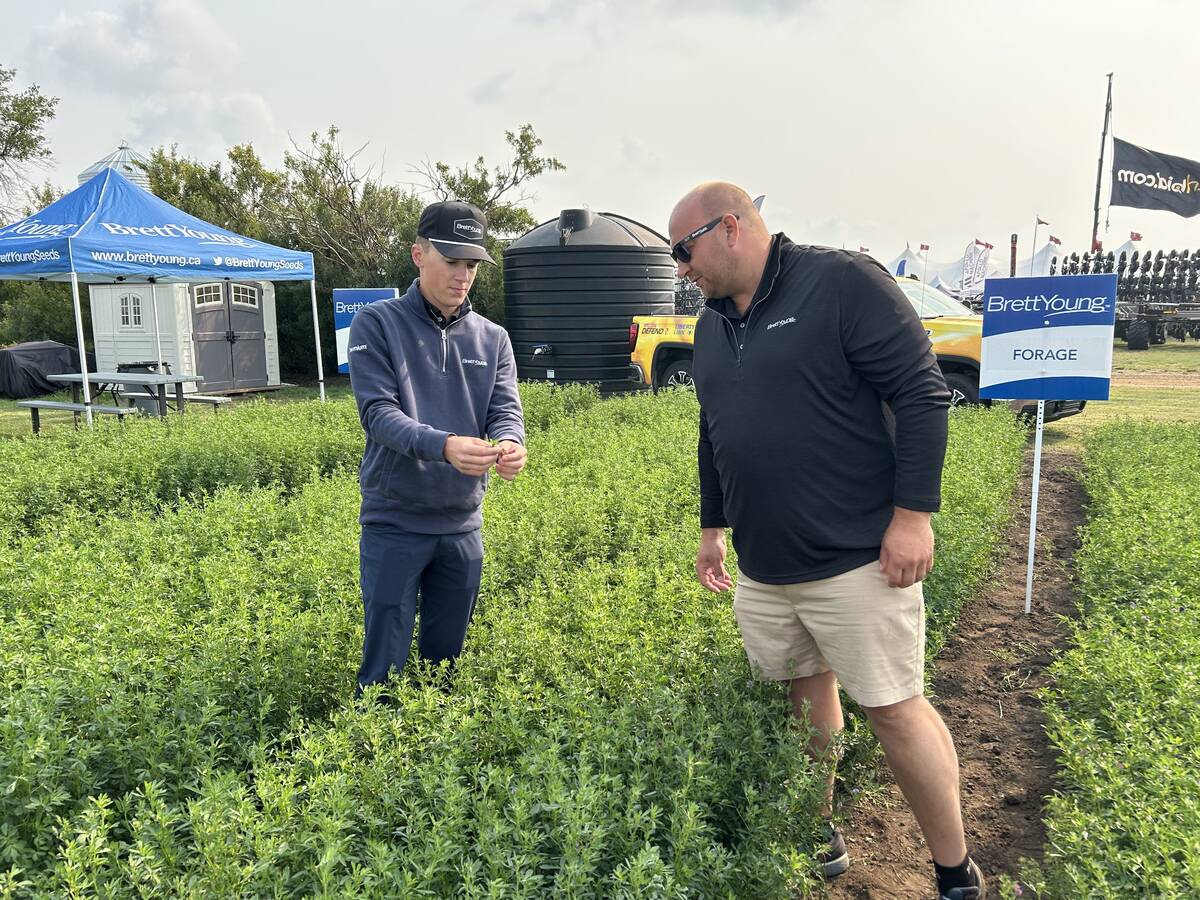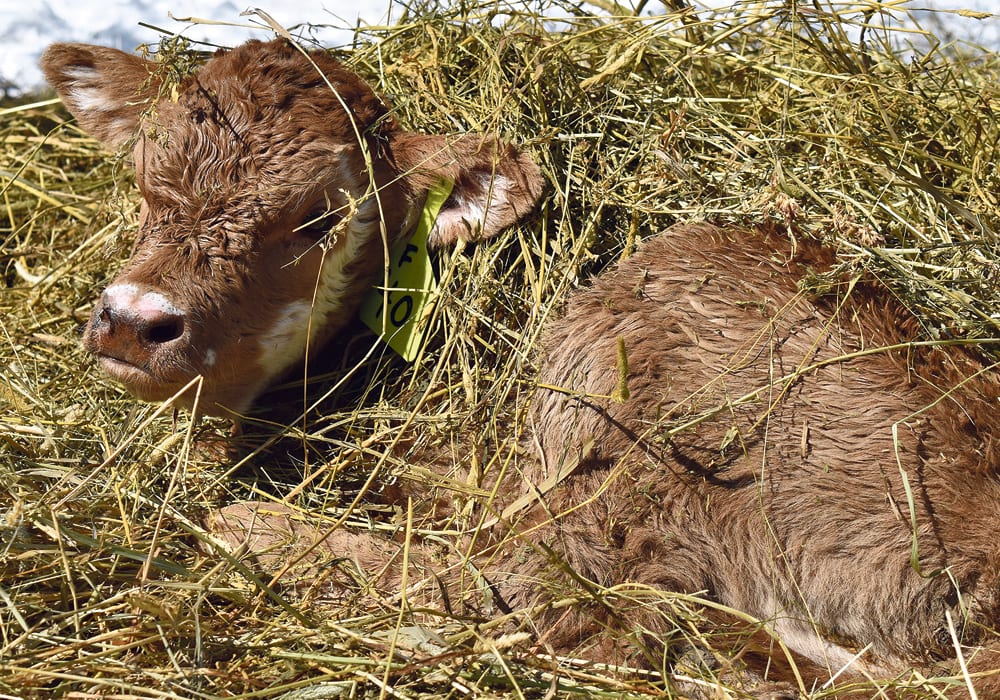Nasal vaccines can do a good job of providing respiratory disease protection to young calves in the first few months of life.
Bovine respiratory disease is a complex of multiple viral and bacterial offenders, said veterinarian Roy Lewis of Merck Animal Health.
“There are three or four viruses involved in respiratory disease and two or three bacteria. Bacteria is what gives the calf severe temperature and depression,” Lewis said.
A nasal vaccine goes directly to the potential site of infection compared to subcutaneous or intramuscular injection where the medicine enters the blood.
Read Also

Strong cattle prices boost forage sales, reps report at Ag in Motion 2025
Representatives from Proven Seed and BrettYoung at Ag in Motion 2025 are reporting strong forages sales across Western Canada this year, driven by high cattle prices, as well as more producers establishing new, higher-quality stands and exploring drought-tolerant varieties.
Research has shown young calves do not have a good immune response to respiratory disease when a modified live vaccine is injected.
Good quality colostrum from the mother transfers antibodies and immunity to young calves, but that wears off over time. Nasal vaccines do not interfere with maternal antibodies circulating in the blood because they target a different spot, said Frank van der Meer of the University of Calgary’s Faculty of Veterinary Medicine.
It is important to use the vaccines within an hour of mixing and make sure they actually go into the nose, he added.
The liquid vaccines go in with a specially designed two-inch long tube with a depth control ring or tab inserted into the nostril. The vaccine needs to come in contact with the wall of the nostril, which means the calf’s head needs to be restrained and turned up so the fluid runs in.
“If you give an intranasal you have to make sure it enters the nasal cavity in the proper way,” said van der Meer.
“These products work very superficially, so on the mucosal surface the immune response triggers a certain amount of immunoglobulins. If you don’t put it in the right spot, you won’t get any protection.”
There are always a few calves that are not vaccinated properly during busy times.
“We require 80 to 90 percent of the herd being vaccinated, and the rest of the herd will be protected,” van der Meer said.
This reduces the chance of a big disease outbreak.
“Generally these viruses have a good level of transmissibility, but if you hit 90 percent (vaccination) rate, then I am not worried.”
He recommended vaccinating for bovine viral disease and clostridial disease complex. Clostridials should go into the neck because the compound contains irritants. An IBR vaccine is water-based and not irritating.
It is important to make sure animals are protected before they go to a feedlot, added van der Meer.
“Most of the animals that come into the feedyard are not protected. They haven’t experienced an infection and they are not vaccinated,” he said.
“It is a cost that is not easy for the cow-calf industry to recoup, but it would save the industry, I think, hundreds of thousands of dollars.”


















